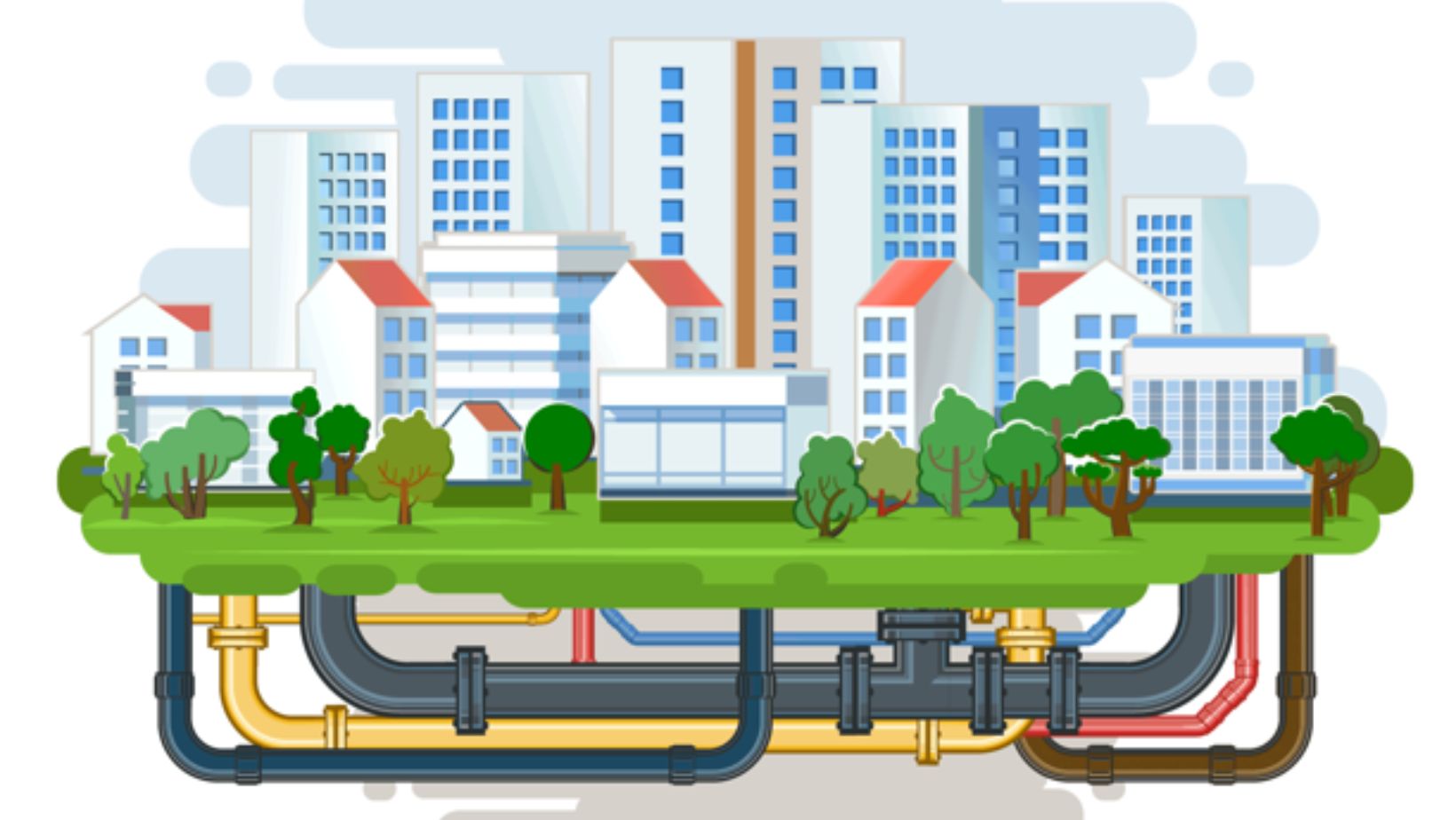Are you struggling to understand and navigate the complex world of utility coordination regulations? Look no further! This article is here to help you. We will guide you through the regulatory landscape, providing insights into the key agencies, compliance requirements, and streamlining processes. With the right technology solutions, training, and monitoring, you can ensure your utility coordination efforts are in full compliance. Let’s dive in and conquer the regulatory challenges together!
Understanding the Regulatory Framework
You should understand the regulatory framework when navigating the landscape of utility coordination. It is essential to have a clear understanding of the rules and regulations that govern utility coordination to ensure a smooth and efficient process.
One key aspect of the regulatory framework is obtaining the necessary permits and approvals. Before any utility work can begin, you must comply with various permitting requirements imposed by local, state, and federal authorities. These permits ensure that the work is carried out in accordance with safety standards and environmental regulations.
Another important aspect is understanding the rights and responsibilities of all parties involved. Utility companies have the right to access public rights-of-way like underground utility mapping to install and maintain their infrastructure. However, they must also comply with regulations to avoid interfering with other utilities or causing disruptions to the public.
Additionally, it is crucial to be aware of any regulations related to utility relocation. In some cases, when new roads or infrastructure projects are being built, existing utilities may need to be relocated. Understanding the procedures and requirements for utility relocation can help ensure a coordinated and efficient process.
Identifying Key Regulatory Agencies
Identifying the key regulatory agencies is an important step in navigating the regulatory landscape of utility coordination. These agencies play a crucial role in ensuring compliance with regulations and ensuring the safe and efficient coordination of utilities. Here are the key regulatory agencies you should be aware of:
• Federal Energy Regulatory Commission (FERC)
• FERC oversees the interstate transmission of electricity, natural gas, and oil. They regulate the rates and terms of service for these utilities, ensuring fair and non-discriminatory access to the grid.
• Federal Communications Commission (FCC)
• The FCC regulates the use of the radio frequency spectrum, which is crucial for utilities that rely on wireless communication. They ensure that the spectrum is allocated efficiently and that interference is minimized.
• State Public Utilities Commissions (PUC)
• Each state has its own PUC that regulates the utilities within its jurisdiction. They set rates, approve infrastructure projects, and ensure compliance with state-level regulations.
• Department of Transportation (DOT)
• The DOT regulates the transportation of hazardous materials, including those used in utility operations. They ensure the safe transportation of these materials and enforce regulations related to pipeline safety.
Compliance Requirements for Utility Coordination
To ensure compliance with regulations, it is essential to understand the specific requirements and guidelines set forth for utility coordination. Compliance requirements for utility coordination can vary depending on the jurisdiction and the specific project. However, there are some common requirements that are typically enforced.
First and foremost, it is crucial to obtain the necessary permits and approvals from the relevant regulatory agencies before starting any utility coordination activities. These permits ensure that the coordination efforts are conducted in accordance with established guidelines and regulations.
Another important compliance requirement is the proper documentation of all coordination activities. This includes documenting the location of existing utilities, the proposed utility designs, and any changes or modifications made during the coordination process. Detailed records are essential for future reference and to demonstrate compliance with regulatory requirements.
In addition, compliance often requires adherence to specific safety protocols and practices. This includes ensuring that utility coordination activities do not pose a risk to workers, the public, or the existing utility infrastructure. Safety measures such as proper signage, protective barriers, and personal protective equipment may be required.
Lastly, compliance may also involve regular reporting to regulatory agencies. This can include providing progress updates, submitting documentation, and addressing any concerns or issues raised by the regulatory authorities.
Navigating State-Level Regulations
How do state-level regulations impact utility coordination efforts? State-level regulations play a crucial role in shaping utility coordination practices. Here are some ways in which these regulations impact the coordination efforts:
• Permitting and Approval Processes: State regulations dictate the permitting and approval processes for utility projects. These processes often involve obtaining various permits, licenses, and certifications, which can vary from state to state. Understanding and complying with these regulations is essential for successful utility coordination.
• Environmental Regulations: Many states have specific environmental regulations in place that affect utility coordination. These regulations aim to protect natural resources, such as wetlands or endangered species habitats. Compliance with these regulations ensures that utility projects do not harm the environment.
• Safety and Quality Standards: State regulations also establish safety and quality standards for utility infrastructure. These standards ensure that utility projects are built and maintained in a safe and reliable manner, minimizing the risk of accidents and service disruptions.
• Right-of-Way Management: State regulations govern the management of right-of-way (ROW) for utility infrastructure. These regulations define the process of obtaining and maintaining ROW access, including rules for excavation, installation, and maintenance activities.
Understanding and adhering to state-level regulations is essential for utility coordination efforts. It ensures compliance, promotes safety, and enables the smooth execution of projects while minimizing environmental impact.
Federal Regulations Impacting Utility Coordination
When it comes to utility coordination, it is important for you to understand the federal regulations that impact this process. The federal government plays a significant role in ensuring the safe and efficient coordination of utilities across the country. These regulations are designed to protect public safety, promote effective communication between utility companies and government agencies, and minimize disruptions during construction projects. Here are three key federal regulations that you should be aware of:
| Regulation | Description | Impact |
| Dig Safe Act | Requires excavators to call a designated number before digging to prevent damage to underground utilities | Promotes safety by preventing accidental damage to utility infrastructure and reduces service disruptions during construction |
| National Environmental Policy Act (NEPA) | Requires federal agencies to consider the environmental impacts of their actions | Ensures that utility coordination projects are environmentally responsible and minimizes negative ecological effects |
| Federal Communication Commission (FCC) regulations | Regulates the use of radio frequencies and communication systems by utility companies | Ensures efficient and reliable communication between utility companies and government agencies during coordination efforts |
Environmental Considerations and Regulations
Ensure you are familiar with the environmental regulations that govern utility coordination to minimize the impact on natural resources and ecosystems. By understanding and following these regulations, you can ensure that utility projects are executed in an environmentally responsible manner. Here are some key considerations and regulations to keep in mind:
• Resource Protection: Implement measures to protect natural resources, such as water bodies, wetlands, and forests, from any potential damage or contamination during utility coordination activities. This includes proper sediment and erosion control, as well as the use of environmentally friendly construction materials.
• Endangered Species Protection: Comply with regulations that protect endangered species and their habitats. Conduct surveys and assessments to identify if any protected species are present in the project area and take necessary measures to avoid or minimize disturbance to their habitats.

• Recycling and Waste Management: Follow guidelines for proper waste management and disposal of materials generated during utility coordination activities. Implement recycling practices whenever possible to reduce the impact on landfills and promote sustainability.
• Environmental Impact Assessments: Conduct thorough environmental impact assessments to identify potential risks and impacts associated with utility coordination projects. This includes evaluating factors such as air and water quality, noise levels, and the potential for soil and groundwater contamination.
• Permitting Requirements: Obtain the necessary permits and approvals from relevant environmental agencies before commencing utility coordination activities. This ensures compliance with regulations and helps prevent any legal issues or delays in the project timeline.
Permitting Processes and Requirements
To successfully navigate the permitting processes and requirements, you must understand the necessary steps and regulations involved. The first step in the permitting process is to determine the specific permits required for your utility coordination project. This may include permits for excavation, right-of-way use, or environmental impacts. Once you have identified the necessary permits, you will need to gather all the required documentation and submit your application to the appropriate regulatory agency.
It is important to note that the permitting process can vary depending on the location and scope of your project. Some permits may require public notices, public hearings, or consultations with other agencies. It is essential to familiarize yourself with the specific requirements and timelines for each permit to ensure a smooth and efficient process.
In addition to understanding the steps involved, you must also be aware of the regulations that govern utility coordination projects. These regulations are in place to protect the environment, public safety, and the integrity of existing infrastructure. It is crucial to comply with all applicable regulations to avoid delays, fines, or legal issues.
Navigating the permitting processes and requirements can be complex, but with careful planning and attention to detail, you can successfully obtain the necessary permits for your utility coordination project.
Practices for Utility Coordination Compliance
To effectively ensure compliance with utility coordination regulations, it is imperative that you consistently follow best practices throughout your project. By adhering to these practices, you can minimize the risk of costly delays, accidents, and regulatory violations. Here are some best practices to consider:
• Pre-Construction Phase:
• Conduct a thorough utility investigation to identify existing infrastructure and potential conflicts.
• Engage utility companies early on to establish open lines of communication and obtain necessary permits.
• During Construction Phase:
• Implement a comprehensive utility coordination plan that includes regular meetings with utility companies and contractors.
• Clearly mark and protect utility lines to prevent accidental damage.
• Regularly update and communicate utility coordination information to all relevant stakeholders.
Challenges and Solutions in Regulatory Compliance
To effectively navigate the regulatory landscape of utility coordination, you must understand the challenges that arise and find solutions to ensure compliance. One of the main challenges in regulatory compliance is the complexity and variability of regulations across different jurisdictions. Each state or locality may have different requirements and procedures for utility coordination, making it difficult for companies to stay in compliance. Additionally, the regulatory environment is constantly evolving, with new regulations and updates being introduced regularly. This requires companies to stay up-to-date and adapt their processes accordingly.
Another challenge is the lack of standardized processes and communication protocols in utility coordination. This can lead to miscommunication and delays in obtaining necessary permits and approvals. To address this challenge, companies can implement standardized processes and use technology solutions that facilitate communication and collaboration among all stakeholders involved in utility coordination.
Lastly, resource constraints can also pose a challenge to regulatory compliance. Companies may struggle to allocate sufficient resources to ensure compliance with all the regulations and requirements. This can be particularly challenging for smaller organizations with limited budgets and personnel. In such cases, companies can consider outsourcing certain compliance tasks or investing in automation and technology solutions to streamline their processes.
Streamlining Utility Coordination Processes
You can streamline utility coordination processes by implementing efficient communication protocols and utilizing technology solutions. By doing so, you can improve the overall efficiency and effectiveness of your utility coordination efforts. Here are some ways to achieve this:
• Implement efficient communication protocols:
• Use standardized communication channels to ensure clear and timely exchange of information between utility companies, contractors, and government agencies.
• Establish a centralized communication platform to facilitate collaboration and coordination among all stakeholders involved in the utility coordination process.
• Utilize technology solutions:
• Adopt a digital platform that allows for the seamless integration of utility data, such as GIS mapping and asset management systems, to enable better visualization and analysis of utility infrastructure.
• Leverage automation tools to streamline administrative tasks, such as permit applications and project documentation, reducing the time and effort required for manual processes.
Technology Solutions for Regulatory Compliance
Implementing the right technology solutions can help you achieve regulatory compliance more efficiently in utility coordination. With the ever-changing regulatory landscape, it is essential to have the tools that can adapt to these changes and ensure compliance with the necessary requirements.
One technology solution that can greatly assist in regulatory compliance is Geographic Information System (GIS) software. GIS allows you to accurately map, analyze, and manage utility data. By integrating regulatory information into your GIS system, you can easily identify any potential conflicts or violations and take prompt action to resolve them. This not only saves time but also helps prevent costly fines and penalties.
Another technology solution that can aid in regulatory compliance is cloud-based collaboration platforms. These platforms allow for real-time sharing and collaboration between utility companies, contractors, and regulatory agencies. By having all stakeholders on the same page, you can ensure that everyone is aware of the regulatory requirements and can work together to meet them. Additionally, these platforms provide a central repository for all regulatory documentation, making it easier to track and manage compliance efforts.
Furthermore, drone technology is also becoming increasingly valuable in regulatory compliance. Drones can be used to inspect utility infrastructure, identify potential safety hazards, and monitor compliance with regulations. By using drones, you can conduct regular inspections more efficiently and accurately, ensuring that your operations are in line with regulatory standards.
Training and Education for Regulatory Compliance
Gaining a comprehensive understanding of regulatory requirements and staying up-to-date with changes is crucial for achieving and maintaining regulatory compliance in utility coordination. Investing in training and education is essential to ensure that you are equipped with the necessary knowledge and skills. Here are some key points to consider:
• Training Programs
• Enroll in training programs specifically designed for utility coordination professionals.
• These programs cover a wide range of topics, including regulatory compliance, industry best practices, and relevant technologies.
• Participate in workshops and seminars to enhance your understanding of the regulatory landscape and learn from industry experts.
• Continuing Education
• Stay informed about the latest developments in regulatory requirements by attending conferences and webinars.

• Take advantage of online resources and professional networks to access educational materials and engage in discussions with peers.
• Pursue certifications or licenses that demonstrate your commitment to ongoing education and professional development.
Monitoring and Auditing Compliance Efforts
To ensure that your compliance efforts are effective and in line with regulatory requirements, it is important to regularly monitor and audit your processes. Monitoring allows you to track your compliance efforts in real-time, identify any gaps or risks, and address them promptly. Auditing, on the other hand, provides an independent assessment of your compliance program to ensure it is functioning as intended.
One way to effectively monitor and audit your compliance efforts is by implementing a comprehensive compliance management system. This system should include clear policies and procedures, regular risk assessments, and ongoing monitoring and reporting mechanisms. By utilizing such a system, you can streamline your compliance efforts and ensure that all relevant stakeholders are aware of their responsibilities.
To help you understand the importance of monitoring and auditing compliance efforts, here is a table outlining the key benefits of each:
| Monitoring | Auditing |
| Identifies compliance gaps and risks | Provides an independent assessment |
| Allows for real-time tracking of efforts | Evaluates the effectiveness of the program |
| Promotes prompt resolution of issues | Ensures compliance with regulatory standards |
| Provides data for reporting and analysis | Validates the accuracy of compliance data |
Frequently Asked Questions
What Are the Penalties for Non-Compliance With Utility Coordination Regulations?
The penalties for non-compliance with utility coordination regulations can be severe. You could face fines, legal action, or even loss of permits. It’s crucial to understand and follow these regulations to avoid any negative consequences.
How Often Are Utility Coordination Regulations Updated at the State and Federal Levels?
Utility coordination regulations are regularly updated at the state and federal levels. It’s important to stay informed about the changes to ensure compliance and avoid penalties for non-compliance.
Are There Any Exemptions or Waivers Available for Utility Coordination Compliance Requirements?
Yes, there may be exemptions or waivers available for utility coordination compliance requirements. It’s important to research and understand the specific regulations at the state and federal levels to determine eligibility.
What Role Do Local Governments Play in Enforcing Utility Coordination Regulations?
Local governments play a crucial role in enforcing utility coordination regulations. They have the authority to ensure compliance and can impose penalties for non-compliance. It is important to understand and adhere to their requirements.
What Resources Are Available to Help Utility Companies Understand and Navigate the Regulatory Landscape?
There are resources available to help you understand and navigate the regulatory landscape of utility coordination. These resources can provide guidance and support in complying with regulations and ensuring smooth operations.
Conclusion
In conclusion, navigating the regulatory landscape of utility coordination requires a deep understanding of the regulatory framework and compliance requirements. It is essential to identify key regulatory agencies at both state and federal levels to ensure adherence to the necessary regulations. Streamlining processes and utilizing technology solutions can aid in achieving regulatory compliance. Ongoing training and monitoring efforts are crucial for maintaining compliance and ensuring the smooth coordination of utilities.


More Stories
What Are The Different Types Of Lawn Sweepers And Which One Is Right For You
How Home Improvements Can Boost Comfort, Efficiency & Resale Value
A Beginner’s Guide to Growing Houseplants